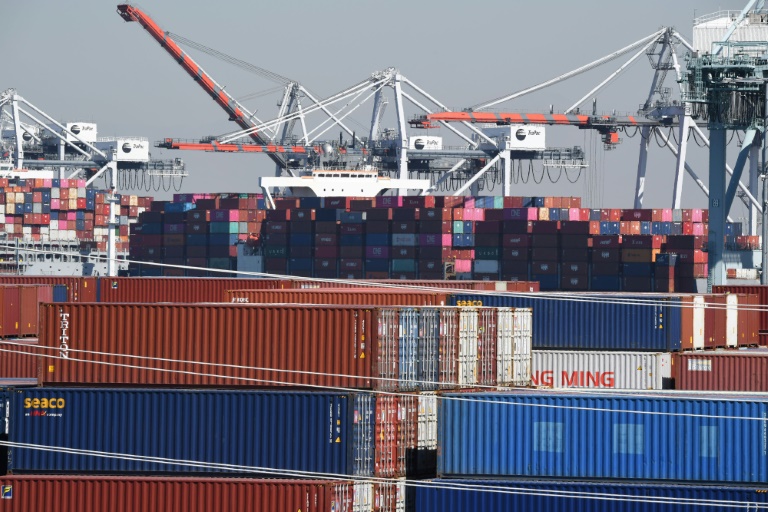Water levels in the Mississippi River are expected to drop even further in the weeks to come, creating havoc on the region’s economic activities and putting drinking water at risk from saltwater intrusion.
On Monday, the river gauge at Memphis dropped to a new low record – minus-10.75 feet – surpassing the previous low record set in 1988.
The Mississippi River is a vital waterway for trade and the lower water levels have impacted the number of commodities that can be imported or exported out of New Orleans. This means that barges cannot be fully loaded.
According to the USDA, agriculture shippers for corn, soybeans, and wheat use barges as a cheaper alternative to trucks or rail to move their grain in bulk. Just under half (47 percent) of all grain is moved by barge.
Additionally, approximately 5.4 million barrels of crude oil and 35 percent of thermal coal are moved on the Mississippi.

“While the public and media generally understand that our economy depends upon viable international ocean shipping, trucking, and rail transportation, the essential role of our inland waterways is often overlooked,” said Peter Friedmann, executive director of the Agriculture Transportation Coalition. “Our members depend upon adequate water levels in the Mississippi River system, to reach domestic and international export markets. The low water disruption of the supply chain will be felt not only by our U.S. producers of food, farm, and fiber but also by U.S. and international consumers as well.”
Agriculture Transportation Coalition
Another impact of the low water levels in the river is that retailers are forced to store both large and small items in 53-foot trailers as an alternative to using warehouse space.
And it is not just bulky furniture items and returns that are going into storage trailers, said Joe Monaghan, CEO, and President, of Worldwide Logistics Group. “Tires are another big inventory item in storage. We are also receiving orders for 53-foot containers to hold the product in pop-up yards for anywhere from one to six months.”
So this means that retailers are trying to move inventory inland to be closer to the consumer. However, there is another problem that has yet to be resolved. As more trade continues to move to the East Coast, congestion at the ports continues to build and the volume of containers heading to warehouses is pushing up prices, even as demand has declined.
CNBC News is reporting that Savannah, Georgia leads the East Coast in the number of vessels waiting at anchor. Vessel reliability is nearing a low point.

“Global vessel schedule reliability may be improving but the Transpacific is stagnant,” said Alan Murphy, founder, and CEO of Sea-Intelligence ApS. “70 percent of vessels are not arriving on time on the Transpacific line which has been hit the worst.”
“The ports like Savannah are full,” said John McQuiston, managing director, and global head of originations in the Wells Fargo trade and supply chain finance division. “You have vessels holding inventory while ports process containers. What took days now takes weeks because of the number of containers coming in.”
“One of my biggest worries right now with this congestion is a railroad strike knocking out the third leg of transport,” McQuiston said. “The U.S. would have an element of paralysis in certain sectors of the supply chain.”

Saltwater getting into the drinking water
The drought in the US is becoming more intense, and the sea level is rising along the coasts. These two impacts of the climate crisis are literally clashing against one another in Louisiana at the mouth of the Mississippi River, where the low water levels and low flow is allowing saltwater from the Gulf of Mexico to push up the river, threatening the drinking water supply.
Because of the low water levels, the US Army Corps of Engineers announced last week they have begun construction on a 1,500-foot-wide underwater levee in the Mississippi River to prevent saltwater from pushing up the river
To do this, the corps has been dredging sediment from the bottom of the river and piling it up near Myrtle Grove, Louisiana, to create what’s known as a sill, which will act as a dam for the denser saltwater in the lower levels of the river.
Ricky Boyett, Army Corps chief of public affairs for the New Orleans District, said the “toe” of the saltwater wedge is already approaching the location of the planned sill. The sill will be roughly 40 to 50 feet high underwater in a location where the water is around 90 feet deep.

It will take another week before the sill is high enough to block the saltwater intrusion. Saltwater intrusion is already impacting a water treatment plant in Boothville in Louisiana’s Plaquemines Parish and is projected to reach another one in Pointe a la Hache. Both of those locations are downriver from the planned sill.
Boyett explained that the sill is going to be built north of Boothville and Pointe a la Hache because the Army Corps focused on preventing saltwater from reaching Belle Chasse and cities further north, including New Orleans, where saltwater intrusion does not normally occur.
While the corps expects the sill to prevent saltwater from reaching New Orleans, the National Oceanic and Atmospheric Administration, said it’s going to be an increasingly challenging strategy moving forward.
The Mississippi River Delta is facing climate and environmental pressures on multiple fronts, including sea level rise, land subsidence, deepening of the channel to allow more vessels, and frequent flooding. Without a permanent fix, temporarily halting saltwater intrusion by creating sills will only cost more in the future, according to William Sweet, an oceanographer and sea level rise expert with NOAA.














